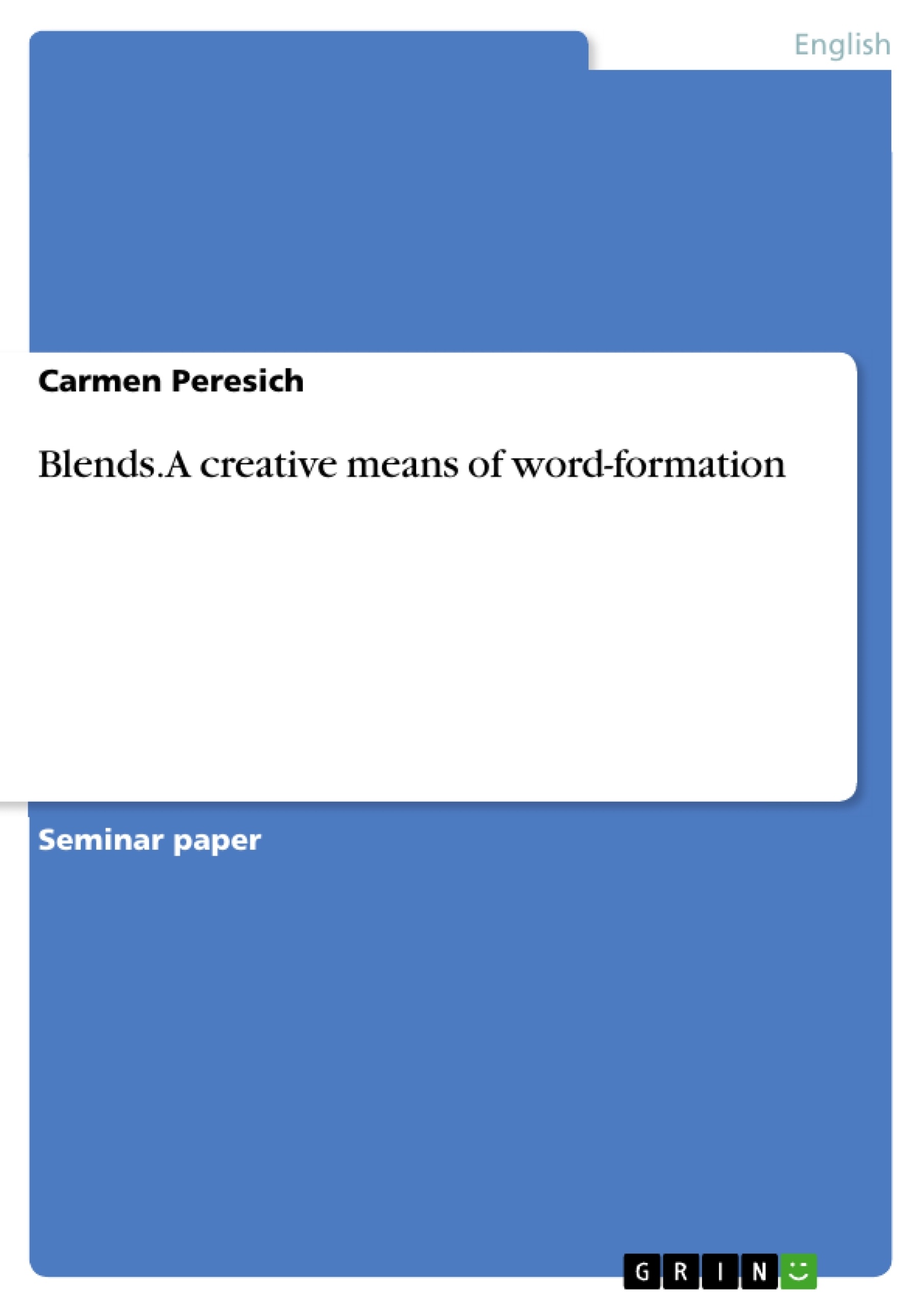Blending is anything but a new phenomenon in the English language. This is proven by the fact that the word brunch, which is one of the most widely known blends, was first recorded in 1896 - more than 100 years ago (Quinion 2014). However, only over the last couple of decades has blending become a very popular word-formation process. Today, in the English lexicon a large number of blends can be found which are no longer recognized as such since they have been in everyday use for quite a long time (Katamba 1994: 184). This can be explained by the fact that blends tend to be abbreviations in the beginning and, due to their word-like appearance, are lexicalized over time (Hadžiahmetović-Jurida 2006: 283). Although blending plays a significant role in terms of word-formation, it is hardly mentioned in monographs focusing on this particular aspect of morphology.
This paper aims to explore the rules that determine the creation of blends as well as to have a closer look on two ways of categorizing them.
Inhaltsverzeichnis
- Introduction
- Blending: A creative way of coining new words
- The process of blending
- Blending and word classes
- Blending within one word class
- Blending across word classes
- The classification of blendings according to Plag
- Shortened compounds
- Proper blends
- Bauer's way of categorizing blends
- Blends in everyday speech
- Summary
- Bibliography
Zielsetzung und Themenschwerpunkte
This paper aims to explore the rules that determine the creation of blends as well as to have a closer look on two ways of categorizing them. The paper focuses on the process of blending, the word classes involved, and different classifications of blends. It also examines the significance of blends in everyday speech.
- Definition and characteristics of blending
- Rules and restrictions governing the creation of blends
- Word classes involved in blending
- Classifications of blends according to Plag and Bauer
- The role of blends in everyday speech
Zusammenfassung der Kapitel
The introduction provides a brief overview of blending as a word-formation process, highlighting its increasing popularity in recent decades. It also outlines the paper's structure and objectives.
Chapter 2 defines blending as a creative process of word-formation, particularly significant in the English language. It discusses the challenges of defining blends and presents different perspectives on the concept, including Bauer's definition and examples of clear blendings.
Chapter 3 explores the process of blending, arguing that it cannot be categorized as complex lexemes or arbitrary words. It discusses Plag's view of blending as a result of two clipped words combined together, following the rule AB + CD => AD. The chapter also acknowledges the existence of exceptions to this rule.
Chapter 4 examines the role of word classes in blending. It investigates whether blending occurs within one word class or across different word classes and explores the potential restrictions imposed by word class.
Chapter 5 delves into the classification of blends, focusing on Plag's approach and its critical evaluation. It also presents Bauer's alternative classification of blends.
Chapter 6 briefly explores the importance of blends in everyday speech, highlighting their prevalence and significance in contemporary language use.
Schlüsselwörter
The keywords and focus themes of the text include blending, word-formation, neologisms, word classes, classification of blends, Plag, Bauer, everyday speech, and the English language. The paper explores the process of blending, its rules and restrictions, the word classes involved, and different classifications of blends. It also examines the significance of blends in everyday speech.
- Quote paper
- Carmen Peresich (Author), 2014, Blends. A creative means of word-formation, Munich, GRIN Verlag, https://www.grin.com/document/287710
-

-

-

-
Upload your own papers! Earn money and win an iPhone X. -

-
Upload your own papers! Earn money and win an iPhone X. -

-
Upload your own papers! Earn money and win an iPhone X. -

-
Upload your own papers! Earn money and win an iPhone X. -

-
Upload your own papers! Earn money and win an iPhone X. -

-
Upload your own papers! Earn money and win an iPhone X. -

-
Upload your own papers! Earn money and win an iPhone X.

